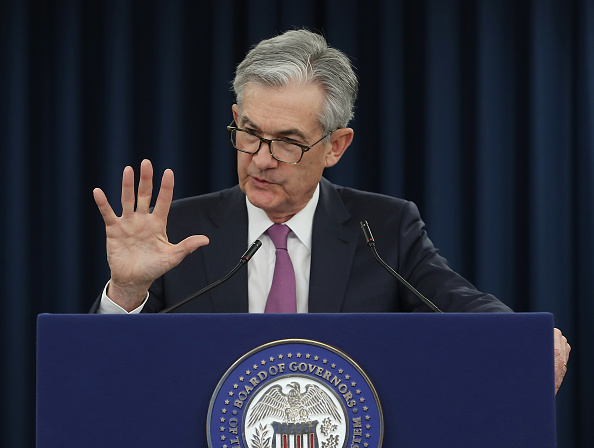
Will the Federal Reserve cut rates in 2019?

Ahead of a key speech by Federal Reserve chair Jerome Powell, markets are widely expecting the US central banker to offer a clear hint that the next move will be to lower interest rates, perhaps as early as this summer.
97.2 per cent chance of a cut
The latest market indicators suggest a greater than 50 per cent chance the Fed will lower rates in July. For December a rate cut is all but guaranteed, according to forward interest rate pricing. But the markets may have massively miscalculated the US central bank’s view of the economy, inflation and risks to its forecasts. There is a risk that the Fed will be a lot less ready to ease than the market thinks, producing a significant decoupling between the Fed and market expectations, which would have important implications for risk assets.
St. Louis Fed boss James Bullard – a voting member of the FOMC – said Monday that a rate cut may be warranted soon. He talked about a sharper than expected slowdown for the US economy. He also discussed a cut as a form of insurance, indicating that the Fed is seeking to get ahead of the curve.
Bullard has always been one of the most dovish members of the FOMC, however, and likely does not speak for the consensus of policymakers.
Economy slows
Macro indicators certaintly point to a slowdown that the Fed needs to be ready to pounce on. Monday’s ISM manufacturing PMI sank to 52.1, its weakest reading since October 2016. GDP growth in the second quarter is seen cooling. The escalating trade war is raising downside risks to the economic outlook and recessionary indicators are flashing warning signs.
But the Fed needs to be mindful of inflation. Core PCE rose to 1.6 per cent in April, up from the 1.5 per cent in March. The main PCE index rose to 1.5 per cent from 1.4 per cent the month before. Income growth was up to 0.5 per cent from 0.1 per cent a year before. Spending cooled from the hot reading a month ago, suggestive of a largely anticipated cool down in Q2 GDP growth.
Inflation is still tame, but we may be seeing tentative signs it’s getting a little wilder. There is probably too much complacency around inflation, although structural shifts of course will keep it in check. Tariffs will likely see price growth increase through the second half, albeit the long-term impact of the depressive effects of tariffs may ultimately tame inflation – just look at the global bond yields are reacting to the recent moves.
Of course we have to temper our bullish inflation instincts from this print with the knowledge that Q1 core PCE rose just 1 per cent, against the previously thought 1.3 per cent. Still it seems that the inflation bears are getting too much credence. The Fed should stick to its guns.